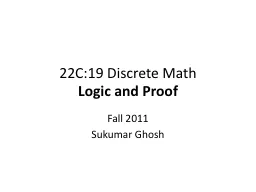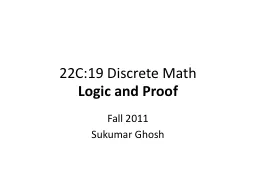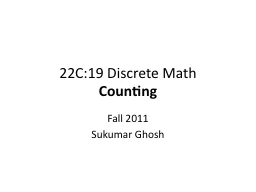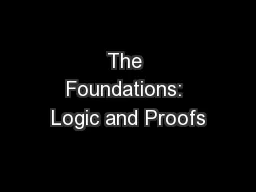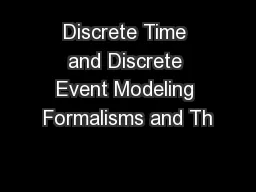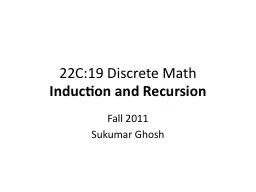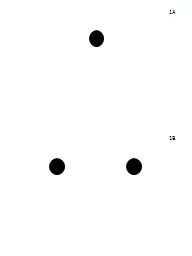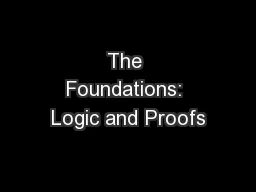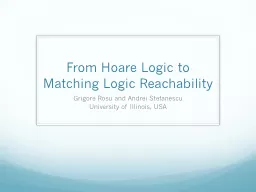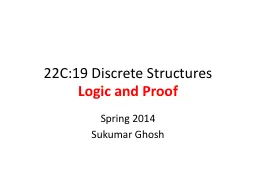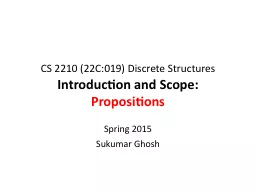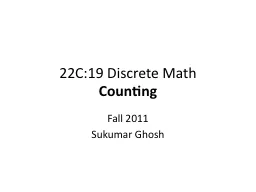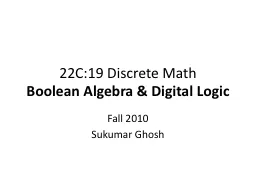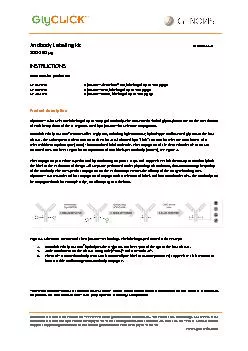PPT-22C:19 Discrete Math Logic and Proof
Author : billiontins | Published Date : 2020-06-15
Fall 2011 Sukumar Ghosh Predicate Logic Propositional logic has limitations Consider this Is x gt 3 a proposition No it is a predicate Call it Px P4 is
Presentation Embed Code
Download Presentation
Download Presentation The PPT/PDF document "22C:19 Discrete Math Logic and Proof" is the property of its rightful owner. Permission is granted to download and print the materials on this website for personal, non-commercial use only, and to display it on your personal computer provided you do not modify the materials and that you retain all copyright notices contained in the materials. By downloading content from our website, you accept the terms of this agreement.
22C:19 Discrete Math Logic and Proof: Transcript
Download Rules Of Document
"22C:19 Discrete Math Logic and Proof"The content belongs to its owner. You may download and print it for personal use, without modification, and keep all copyright notices. By downloading, you agree to these terms.
Related Documents

